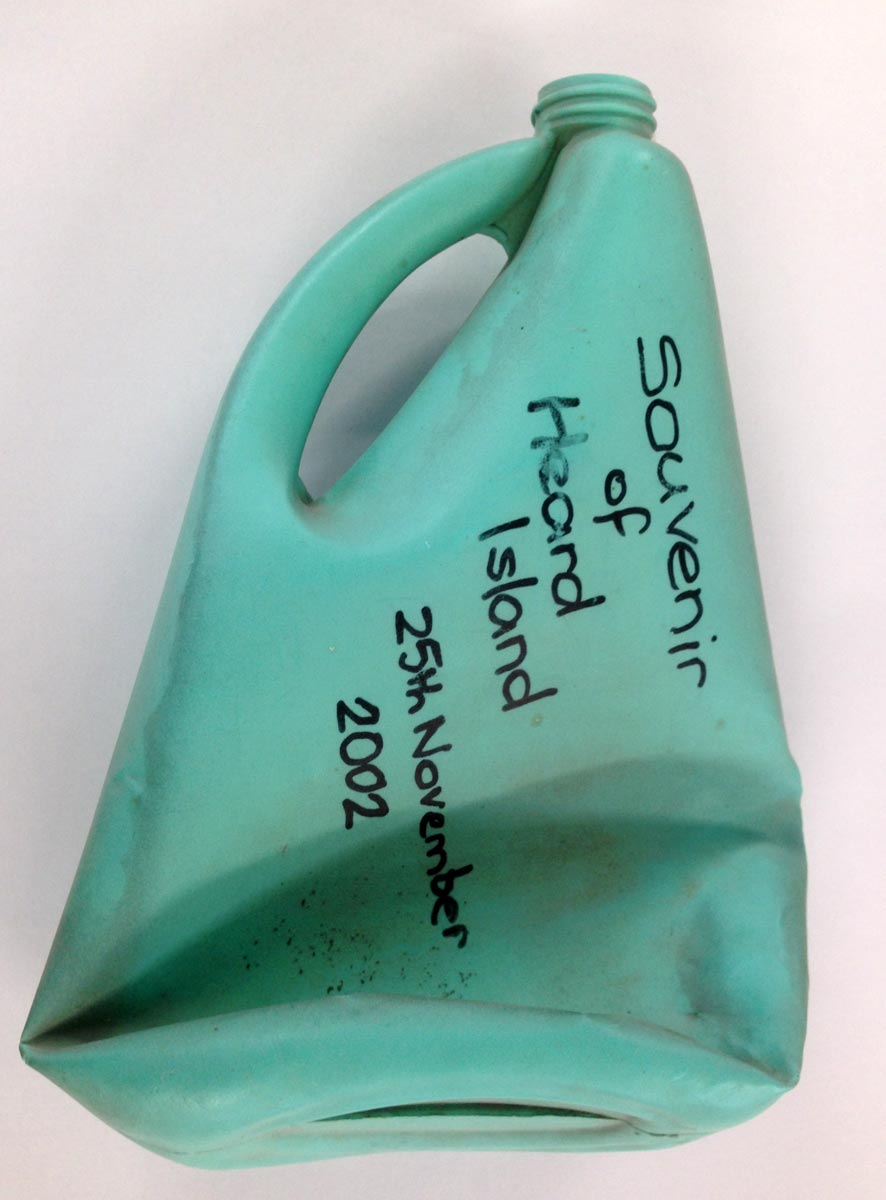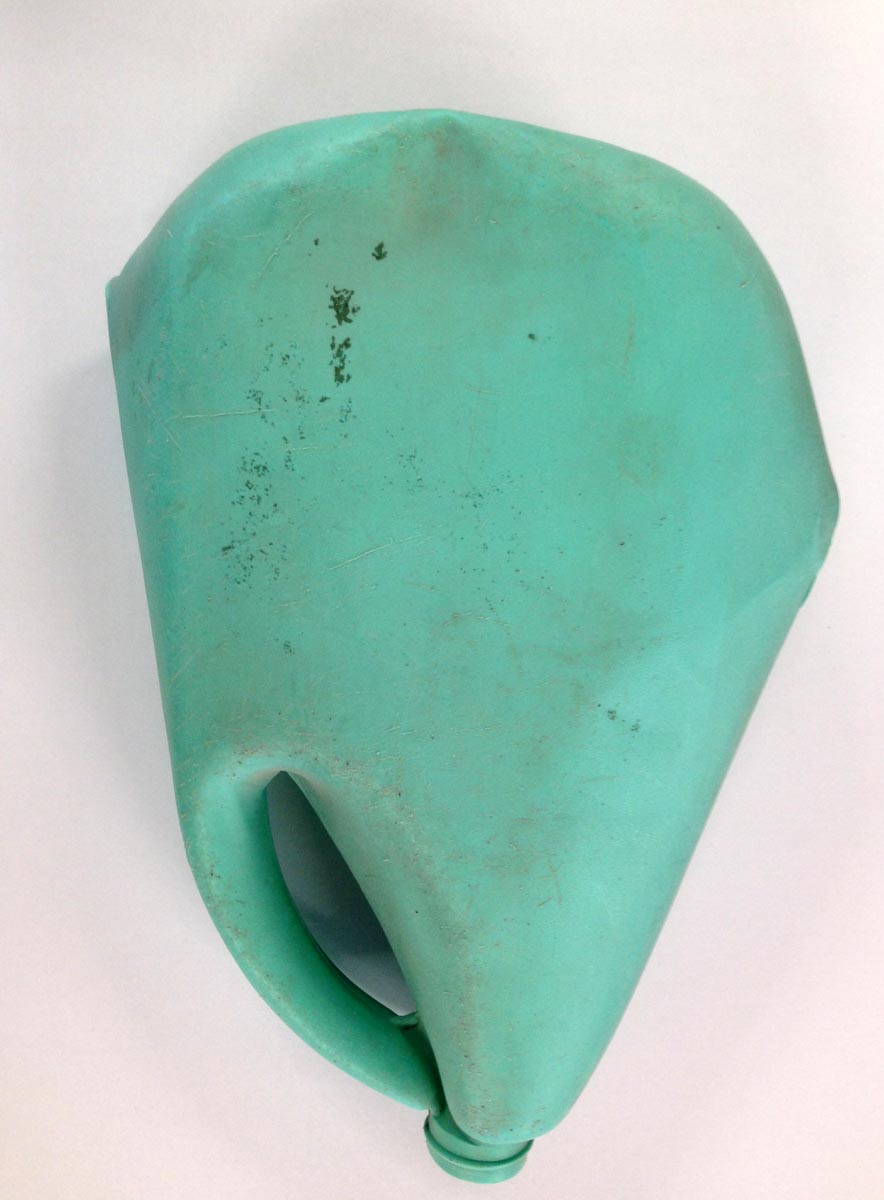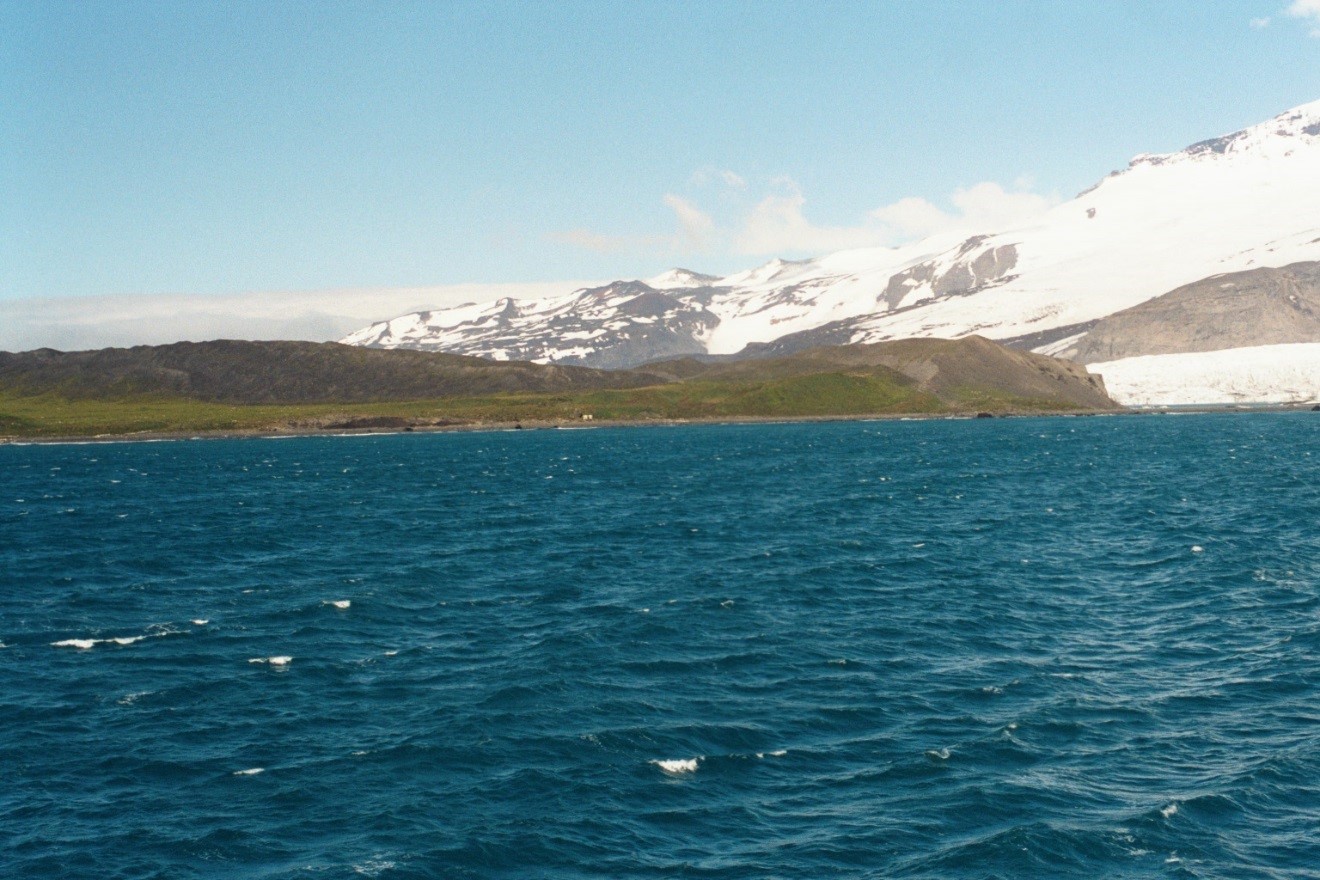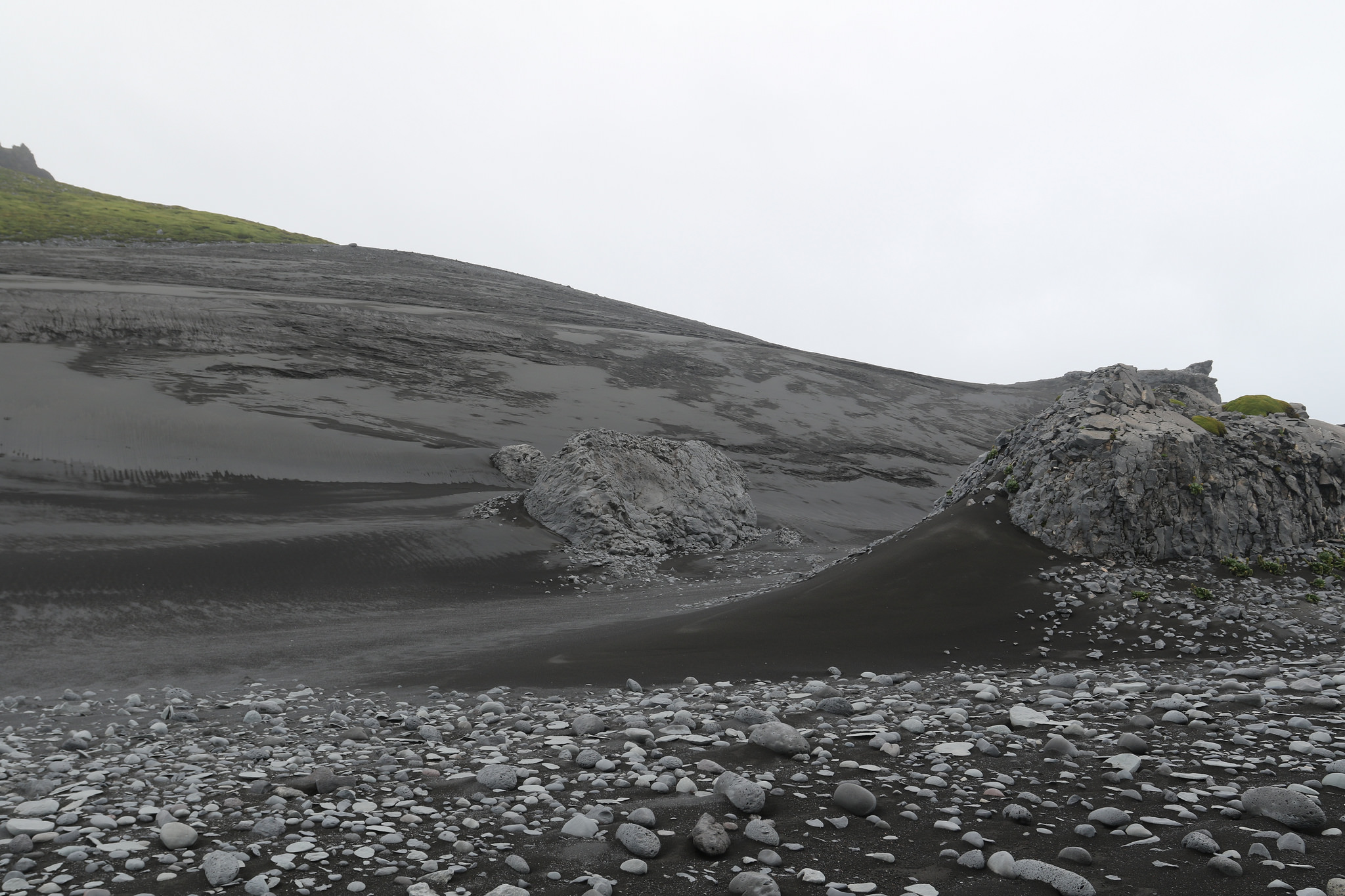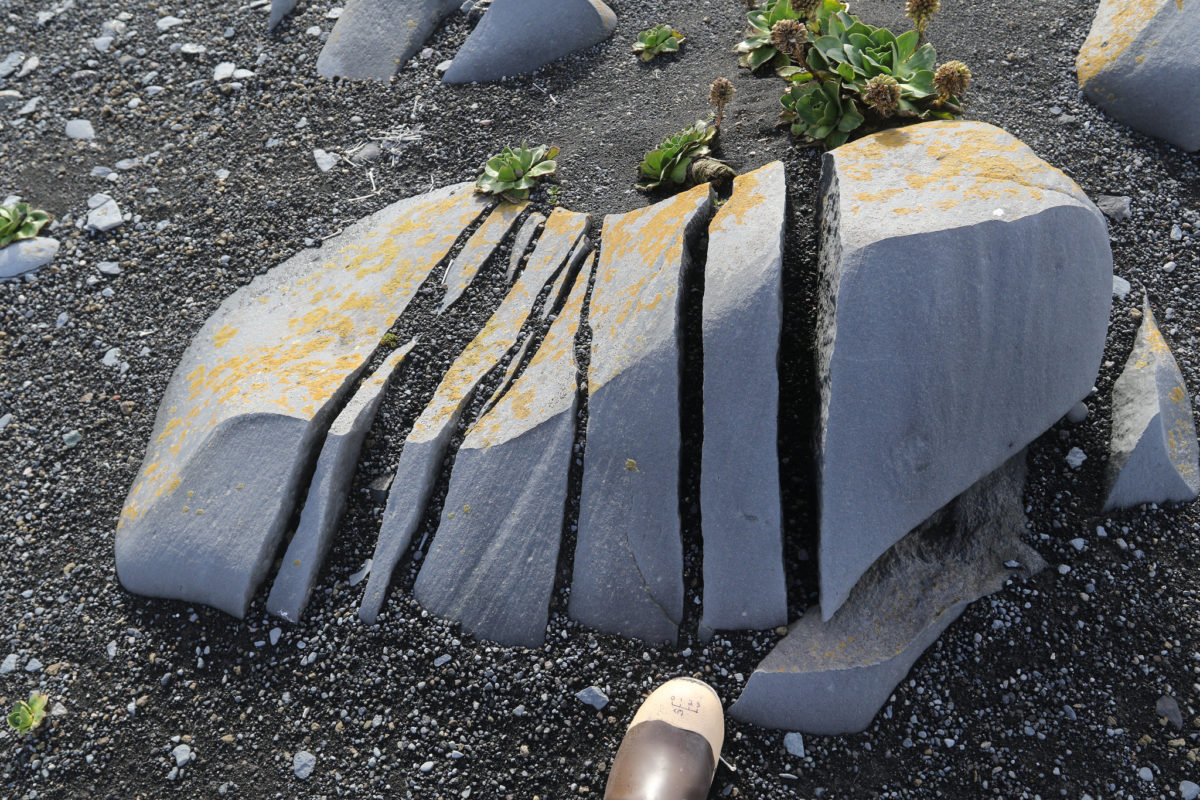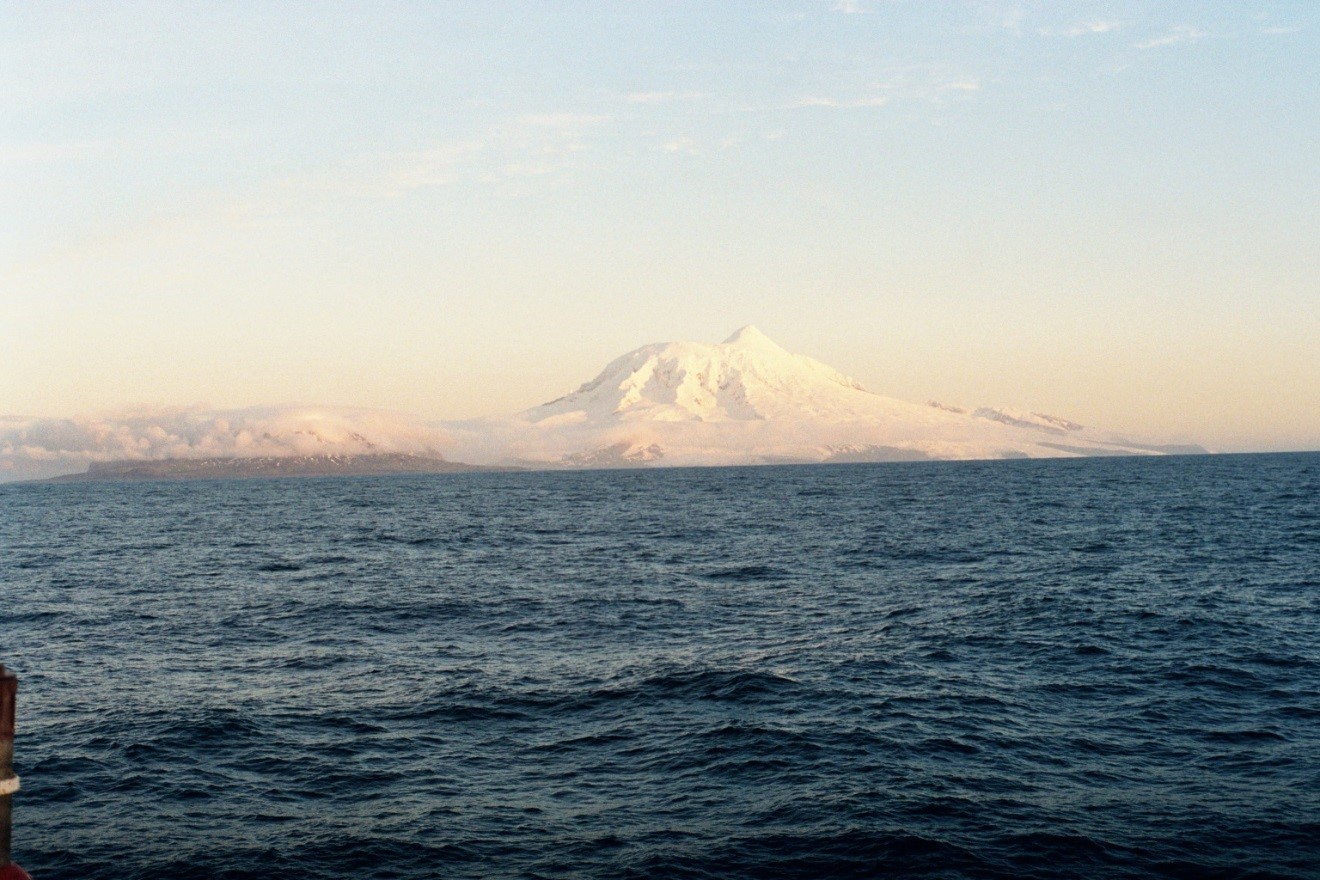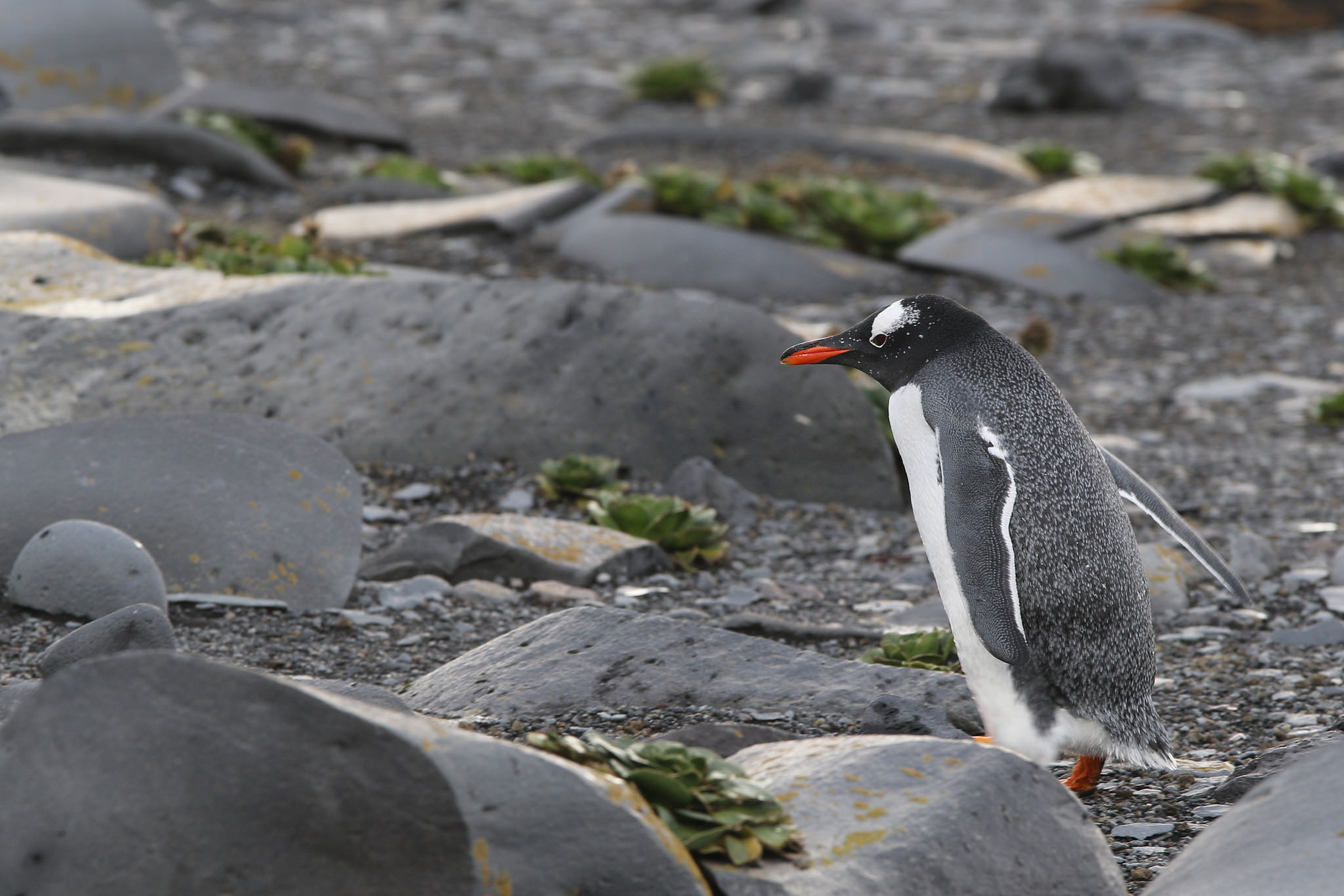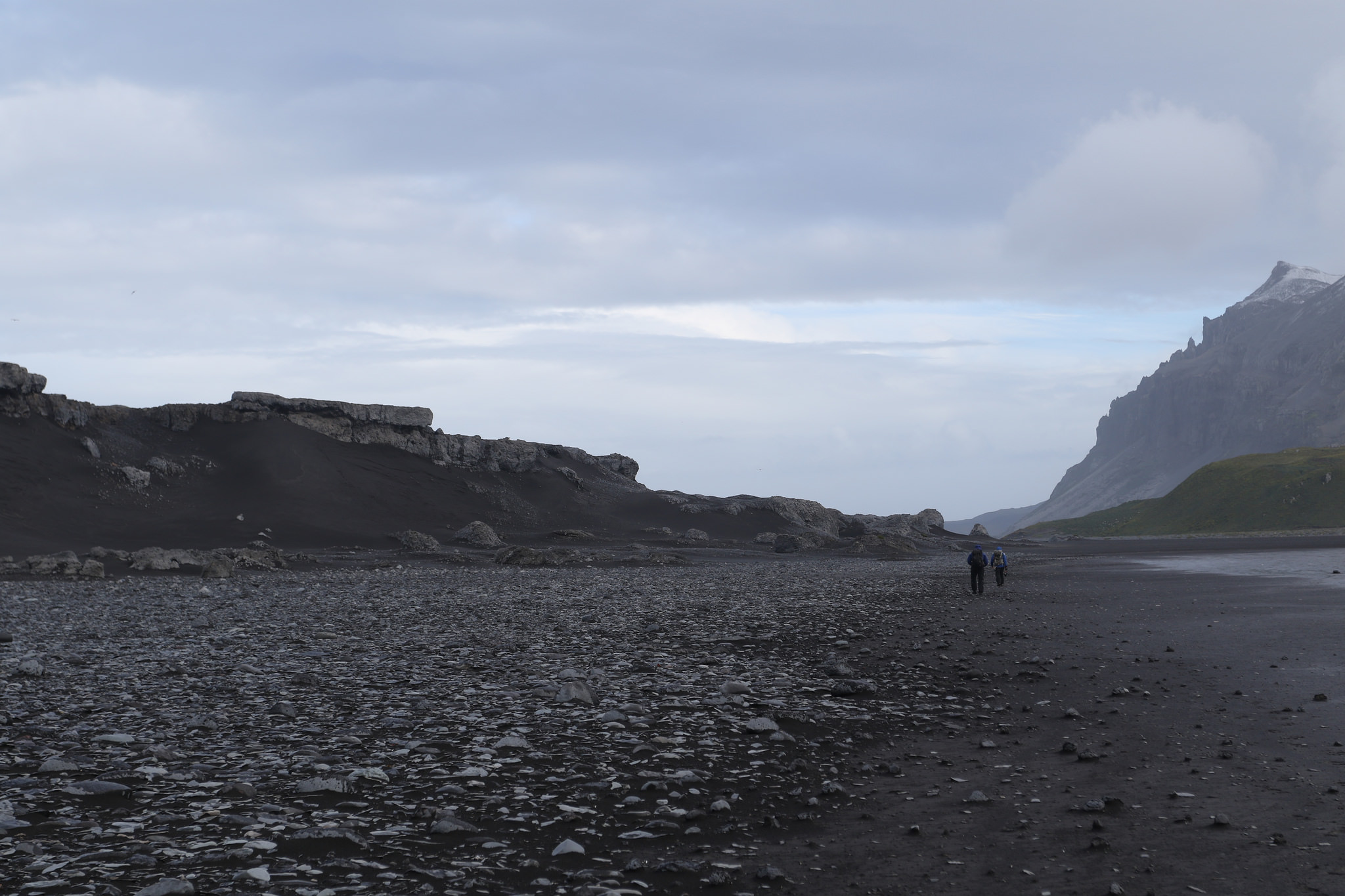Empty fabric softener bottle
Heard Island empty fabric softener bottle
I picked up this bottle from a beach in the subantarctic. It was a black sand beach on Heard Island, which isn’t really my place any more than it is yours, except that I had enough time ashore there to do a couple of walks.
Heard Island is an active volcano covered in ice and snow. Its Fuji-like cone rises spectacularly from sea level in the southern Indian Ocean. When I first saw it, I was on the deck of the expedition ship Akademik Shokalski’iy. It was a late November morning, and at first the island was nothing more than a faint triangle in a mass of white cloud.
We landed near Atlas Cove, where Australia had a base from late 1946 until early 1955. Small parties of men went there for a year at a time over 8 consecutive years. They built and maintained a base and made scientific observations. It was an isolated existence. The only contact with the outside world was through the radio operator – they played chess with men on other subantarctic islands, slowly, by radio. Australia’s occupation was part of a strategy for establishing our territorial claim to the island, a claim made at the end of 1946.
What does it look like?
The bottle is a two-litre plastic bottle. It looks worn but the plastic – probably a high density polyethylene – is still robust, something which here, on this beach, obviously has minuses as well as pluses. Its label is gone, and there aren’t many clues to its history. Do you think it is some sort of laundry detergent bottle?
Fabric softener is what comes to my mind. Perhaps it’s the suggestiveness of that soft, faded aqua. I like my towels rough, absorbent and old, not thick, soft and water-repellent, so I don’t use fabric softeners. Maybe that’s one reason I’m happy to imagine that this was what it once held. If it had been a wine bottle I wouldn’t have felt detached from any possible responsibility for it, but if it’s a fabric softener bottle it’s definitely not my bottle. And if it’s not my bottle, then is it in any way my problem?
Why did I choose it?
The funny thing is that I don’t really know why I chose the plastic bottle. It is not exactly a thing of beauty, and though it was the only one I saw in a day ashore, it wasn’t a unique find. I know that, because I know a man who volunteered to walk the length of four Heard Island beaches daily in the southern summer of 2000. In 4 months Stuart had hardly a day off, despite the atrocious weather. He logged his finds every day. By the end of the summer he had collected a tonne and a half of litter, almost all of it plastic – bottles like this, bait box straps, six-pack webbing, fishing line, buoys, shampoo bottles, sunscreen bottles, tiny fragments. At the end of summer, the collector and his pile of catalogued litter were ‘RTAd’, or returned to Australia.
Leaving it there
I didn’t want to leave the bottle on the beach. When I found it I was walking with an Australia Antarctic Division scientist, the government representative on our tourist ship. She felt about rubbish the way I did. She pulled hard on a huge woven plastic cargo bag to unearth it from its half-buried grave, and dragged its dead wet sand-encrusted weight across a piece of flat land known affectionately as The Nullarbor to a place where she could cache it for later collection. I picked up my bottle.
Island birds
A pair of sooty albatrosses were nesting in a valley near the beach. They called as they circled, and I looked up at them. The watery southern hemisphere hasn’t got much land in its higher latitudes except for Antarctica. Southern Ocean mammals such as the elephant seals on this beach, and seabirds like these sooties, need land to mate and moult. They don’t have a choice. Land – or sand – is essential.
The scattered islands of the subantarctic south of Africa, South America, Australia and New Zealand are prime real estate for these creatures. Australia has two subantarctic possessions, Heard and Macquarie. Macquarie Island is further south, but Heard is colder and more forbidding. It lies south of an oceanic and atmospheric boundary called the Antarctic convergence, and its weather is significantly harsher than that of Macquarie Island.
Neither island boasts a single tree – trees are an almost unknown thing at 53° south. Birds nest on the ground or on cliffs, and are vulnerable to any land predators that arrive. Some birds do not survive such introductions. The Macquarie Island parakeet yielded to cats, rabbits and rats a century ago.

Laiko Losse (Flickr CC)
What is this bottle?
When I picked up the bottle I had the momentary thrill that comes with doing a good turn. On the ship I discovered that technically, even picking up litter requires a permit.
And today the bottle isn’t litter, it’s somewhere between a souvenir and a museum piece. It is many other things too – an example of the estimated 8.3 billion tonnes of plastic that have been manufactured since the year before I was born, a testimony to the global interconnectedness of human activities, an object that suggests we can do things better.
When I pick up this bottle today and hold it, it transports me to a moment on a cold and windy beach which lies four thousand kilometres from any inhabited nation. A place where sooty albatrosses fly, and a ship waits for me.
Bernadette Hince is a dictionary-writer interested in history, cold places and food.


